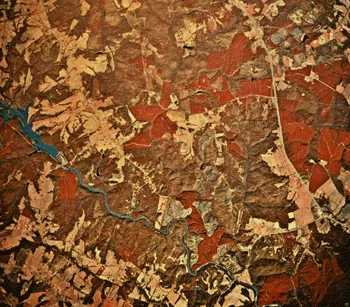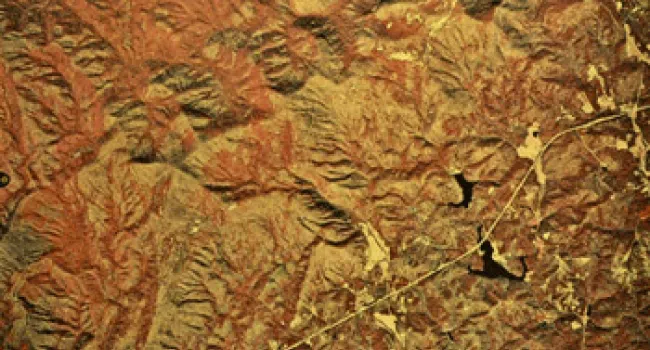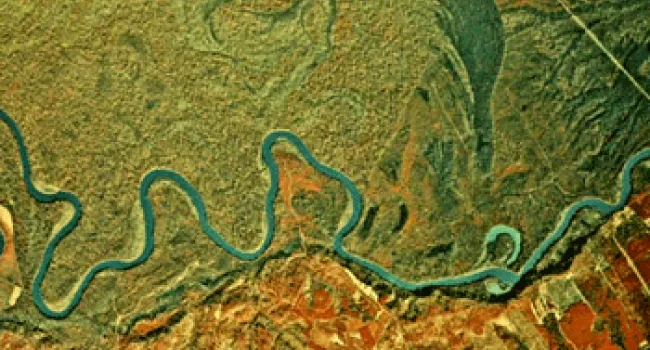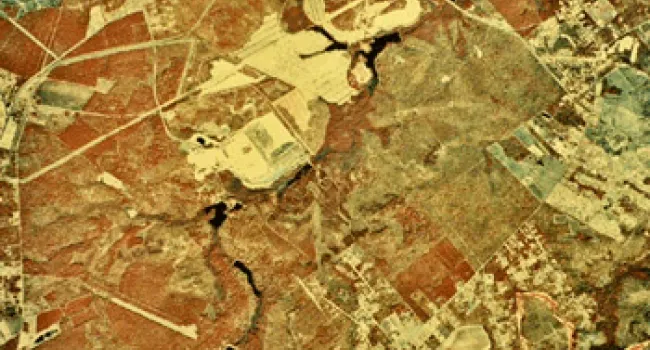
Aerial photograph courtesy of SC Dept. of Natural Resources, Map Lab
Featured Artists: Billie Anne McKellar | Peter Werner | Petroglyphs | Steven Ferrell
The mountainous upstate transitions into the gentle, rolling hills of the Piedmont as one travels closer toward the coast of South Carolina. Piedmont farmers of the 18th and 19th centuries laid the foundation of the state's cotton farming economy, while devastating the area's thickly forested terrain in the process. Today, the Piedmont is home to one of the fastest growing economies and urban populations in the state, the Greenville-Spartanburg area. Conservation efforts to protect rivers and wildlife widen as the growing impact of urban and suburban development change the landscape.
Landforms
The french word “piedmont” means “foot of the mountains.“ The hilly, northwestern section of the area borders the Blue Ridge mountains. The Piedmont becomes more of a rolling plain as it moves farther away from the mountains. Rivers in the Piedmont are wider and slower than they are in the Blue Ridge, and usually carry eroded sediment from the mountains.
The Piedmont area is rich in mineral resources. In 1802, the first gold rush in North America began in the area. Today, clay, granite, shale, vermiculite (mica), silver, and gold are some of the geologic resources mined in the Piedmont.
Vegetation
Originally, the large forests of the Piedmont were composed of hardwoods and shortleaf pines. The 19th century brought cotton farming, and severely altered the Piedmont landscape. Much of the land was cleared, farmed, and then abandoned as soil washed away due to erosion.
Efforts to conserve soil and reforest the land began in the 1930’s. Nonnative loblolly pines were seeded to begin the first phases of reforestion. Over time, a few of these pine forests progressed into the original oak-hickory forest of the Piedmont.
Agriculture
Clay below the surface of Piedmont topsoil does not easily absorb rainwater. Erosion from runoff rainwater is a constant threat to farms, and only proper conservation techniques prevent crops from washing away. About 30 percent of the Piedmont is farmland.
Peaches are a major Piedmont crop. South Carolina is the second largest producer of peaches in the country. Row crops such as cotton, corn, and soybeans are other major crops grown in the area.



